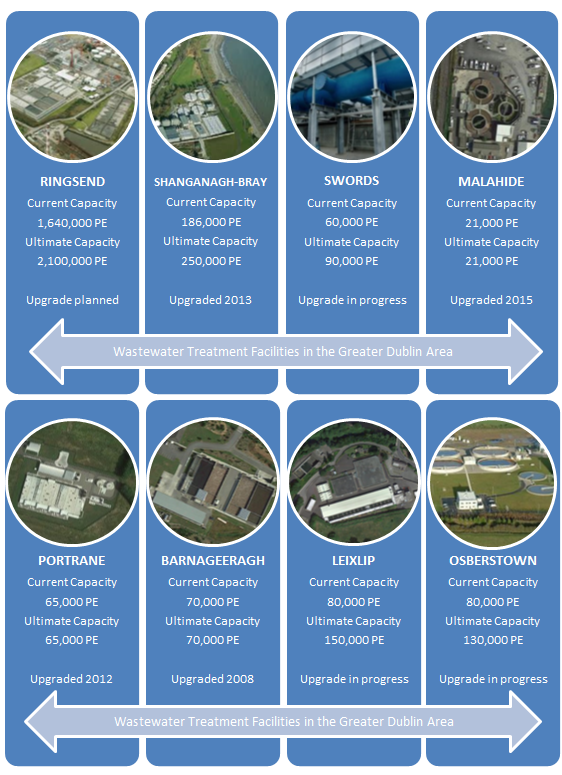Greater Dublin Drainage Project Update: Summer 2016
May 2016
Welcome to the summer 2016 update for the Greater Dublin Drainage Project (GDD)
In this update:
- Details of a forthcoming study tour to Shanganagh-Bray Wastewater Treatment Plant.
- Update on Greater Dublin Drainage development timeline.
- Wastewater treatment in the Greater Dublin Area.
Invitation to visit Shanganagh-Bray Wastewater Treatment Plant
GDD - Project Development Update
Uisce Éireann is currently finalising all of the environmental studies and other elements of the planning application for the GDD project. We intend to submit a planning application to An Bord Pleanála under the Planning and Development (Strategic Infrastructure) Act 2006 in the first half of 2017.
An Environmental Impact Statement (EIS) will be submitted with the planning application. The EIS is currently under development and the majority of the necessary studies are now complete. A small number of remaining ecological surveys (overwintering birds survey and the marine mammals survey) are currently being completed. Additional traffic surveys have also been completed recently.
Following submission of the planning application, a statutory public consultation will be carried out under the direction of An Bord Pleanála. Members of the public and interested parties will be able to make observations on the project to An Bord Pleanála at that stage.
In the meantime, the project team continues to welcome any questions or feedback on the development of the GDD project:
Email: info@greaterdublindrainage.ie
Call: 0818 44 55 67 (9am to 5pm Monday to Friday; closed 1-2pm)
Website: www.greaterdublindrainage.ie
Wastewater Treatment in the Greater Dublin Area
The Greater Dublin Drainage project is needed in order to provide adequate future wastewater treatment capacity for the Dublin region.
Wastewater treatment facilities form part of the primary infrastructure network necessary to facilitate essential development like housing, hospitals, schools, and industry. Today, development in some parts of the Dublin region is constrained, due in part, to a lack of essential infrastructure.
Wastewater generated in the Greater Dublin Area is currently treated at eight main wastewater treatment plants (as shown below) and at more than fifty local facilities.
The majority of the main plants are 'regional' in that they serve more than one town, city area or region. For example, the largest treatment facility at Ringsend currently serves Dublin City, South Dublin, part of Dun Laoghaire Rathdown, part of Fingal and a small part of Co. Meath.
The Greater Dublin Strategic Drainage Study (GDSDS, 2005) examined how future demand for wastewater treatment can be met. It recommended that all of the main regional WwTPs be upgraded to their ultimate capacities. As shown below, some of these upgrades are complete, others are currently in planning, and some are planned for the future. The current and future treatment capacities (expressed in Population Equivalent (PE)*) for these facilities are as follows;
- a new wastewater treatment plant (WwTP) on a 23-hectare site at Clonshagh (Clonshaugh);
- an underground orbital sewer and two pumping stations;
- an outfall pipe from the wastewater treatment plant discharging to the Irish Sea, (approximately 1km north-east of Ireland's Eye).
At operation, over 50% of the wastewater treated at this new regional plant at Clonshagh (Clonshaugh) will come from Fingal including from part of the North Fringe area (Dublin Airport, Meakstown, Grange/Baldoyle) as well as from the Blanchardstown catchment. The remainder will come from the northern fringes of Dublin City and south east Meath - intercepting sewers that currently go to Ringsend.
The new GDD facility will form a key part of the regional drainage network and will enable residential and commercial development to occur both in Fingal and in the greater Dublin area.
The GDD project will protect the environment and help to meet the requirements of the Water Framework Directive (WFD) and other relevant EU and national water quality regulations.
*Population equivalent or unit per capita loading, (PE), is a means of expressing wastewater load produced by the population and by industrial facilities and other sources.
